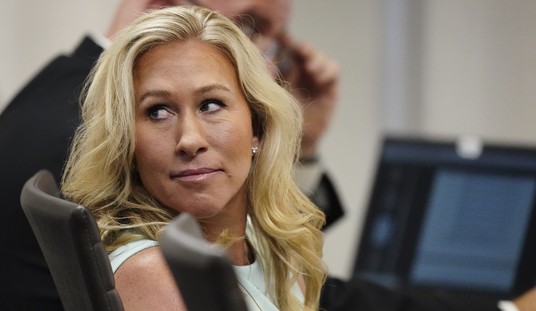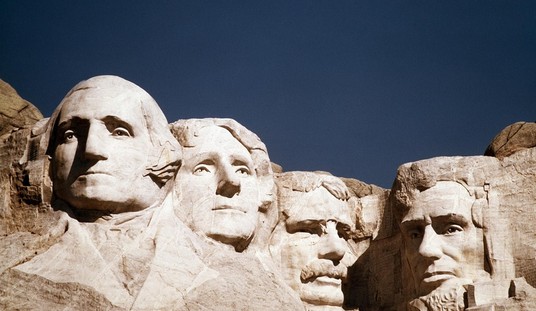A strange but true fact. Although everyone understands that the election will boil down to Florida, Ohio, and Pennsylvania, with Trump needing a clean sweep to have a real chance at national victory, there’s been exactly one poll of Florida and Ohio since the Democratic convention. (That was a Suffolk poll of Florida a week ago, which showed Clinton up six.) You would think pollsters would be churning constantly in those three states, given their significance. Instead it’s one national poll after another, which are important as indicia of broad trends but ultimately meaningless compared to the FL/OH/PA trifecta. More state polls from the big three, please.
On the other hand, why bother spending money to poll all three states if Trump is slipping behind decisively in any one of them? He needs all three. If Pennsylvania goes sideways, Florida and Ohio don’t matter. With this new survey from Susquehanna, we now have three PA polls taken after both conventions. Results: Clinton by four, Clinton by 11, and now Clinton by nine, with Susquehanna finding Hillary ahead 46/37 in a four-way race. (A fourth recent poll of the state by Suffolk, taken during the Democratic convention, also had Clinton by nine.) All four are polls of likely voters. What now?
Lee said he was surprised by the results considering the poll also showed that jobs and the economy and national security were listed as the most important issues facing the nation. Additionally, 56 percent of respondents feel the nation is on the wrong track. All of those things should push voters to the outsider, Donald Trump, Lee said.
But perhaps the answer is in likeability. When asked their opinion of Hillary Clinton, 49 percent said they view her unfavorably and 40 percent had a favorable opinion.
Donald Trump had a 57 percent unfavorable and just 35 percent favorable view of him.
“We know to a large extent voting for President is voting for someone you can identify with, that you like,” Lee said. “That’s gonna be a tough thing to overcome if he can’t improve his image in this state.”
Before the “unskewing” analyses begin, note that Susquehanna has Pat Toomey trailing by just two points in his Senate race. The two other most recent polls of the state had Toomey trailing by a point and ahead by a point. Not good for an incumbent, but also proof that these polls don’t have an across-the-board Democratic tilt. Trump is simply running behind Toomey — far behind, in fact. Susquehanna’s sample is also interesting in that it has near parity between the parties, with 35 percent Democrats versus 33 percent Republicans. That’s wildly different from the partisan make-up of the Pennsylvania electorate in 2012, when the state was 45 percent Democrats versus 35 percent Republicans. It’s true that PA has been drifting redder in party registrations over the past four years, which would account for some of the change, but 10 points is a big shift. It’s possible that Susquehanna is lowballing Clinton’s lead by underestimating how many Democrats will turn out on Election Day.
Brandon Finnigan, who runs Decision Deck HQ and who’s been beating the drum for years now about Pennsylvania being a ripe pick-up opportunity for the GOP (here’s his magnum opus on the subject), posted this comparison over time this morning to capture his despair:
"This is fine." pic.twitter.com/TGJdfGUpUW
— Brandon Finnigan (@B_M_Finnigan) August 9, 2016
If you’d still rather look at national polls, the latest comes from NBC News and SurveyMonkey, a poll that used to favor Trump earlier in the race (possibly because Trump fans feel freer to indicate their true preference in anonymous online surveys than in conversations with live pollsters), but which has gone sour for him lately. Their last poll was conducted during the Democratic convention and had Hillary up eight points, but some dismissed that at the time as evidence of a convention bounce. Two weeks later, they have her gaining a couple of points in the interim: It’s now Clinton 51, Trump 41, thanks to some of Trump’s base beginning to peel off.
Trump also regularly has an advantage among white men. Trump has been 23 points ahead of Clinton among white men over the past two weeks, 58 percent to 35 percent. But that support is down from a 31-point margin among white men in Trump’s favor during the week of the Republican National Convention…
White evangelicals are traditionally a very strong voting bloc for Republicans. Trump lost momentum even among that group. He went from a 60-point advantage in early July to a 49-point advantage in the latest results — 71 percent to 22 percent. While an overwhelming majority of white evangelicals still support him, the decline in support among that group is evidence that Trump has lost traction even among the most steadfast Republican demographic groups.
That’s a poll of registered voters, not likelies, but the sample is enormous at over 11,000 people, meaning a margin of error of just 1.2 points. It’s also the second poll in the last week to put Clinton at 50 percent or better. Trailing by any margin, let alone a double-digit margin, is trouble, but if the person leading is stuck in the low 40s, all you need to do to pass her is win undecideds. If Hillary starts polling 50+ reliably, it’ll mean that Trump can only win by going a step further and prying loose votes that have already been committed to her. He’ll have one golden opportunity to do that next month, per these Susquehanna numbers:

If he was thinking seriously of skipping the debates before, he isn’t anymore. He has no choice. He needs a gamechanger.
One last note. A few readers have been emailing us this Gallup data on party identification as evidence that, yes indeed, all of the polls are skewed in vastly overestimating the number of Democrats in the electorate. Gallup has it 28D/28R/42I, with an even 43D/43R split if you include “leaners.” That’s interesting, but I don’t know why anyone would assume that Gallup is necessarily right and the great bulk of other pollsters, which are seeing a 36D/29R split in HuffPo’s poll average, are wrong. If 10 polls see one result and one poll sees something very different, why trust the outlier unless you’re emotionally invested in believing it? Also, if you scroll back through Gallup’s data to 2012, you’ll see that the GOP led in party identification (47/45) as late as late July of that year. Usually you don’t see party identification shift decisively towards the winner of the election until the home stretch of the race. And finally, it’s no great surprise that party ID would be harder to gauge this year since there are strongly dissatisfied cohorts on both sides, conservative anti-Trumpers on the right and Berniebros on the left. Some of these people have already left their parties in disgust at their respective establishments but will nonetheless feel compelled to vote for the party nominee because they despise the other party’s choice. If it’s true, as some polls recently have showed, that Clinton is picking up more Republicans than Trump is picking up Democrats, that alone might explain her big lead even if you believe party ID is close.
In lieu of an exit question, here’s Harry Enten on why “unskewing” is silly.







Join the conversation as a VIP Member